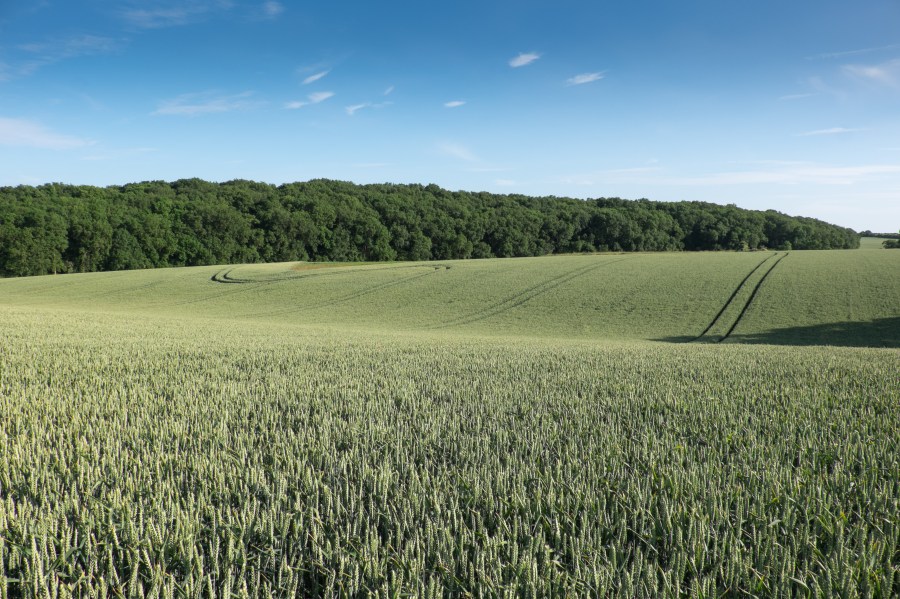Sowing winter wheat into the start of 2020 remains the best option for growers struggling to make up the drilling shortfall caused by autumn 2019’s atrocious wet weather, according to the latest advice from KWS. Charlotte Cunningham reports.
Prioritising margin protection in the short term and damage limitation to rotations in the long term should be the focus for most growers and later-drilled wheat delivers on both fronts, according to KWS’s product development manager, John Miles.
“With many modern high-performance varieties capable of delivering over 95% of their full yield potential when drilled as late as February and shortages of the UK crop widely predicted, wheat remains the best bet economically.
“But it’s the top option agronomically, too, as moving land planned for winter cropping into spring use could disrupt your rotations for several years which needs avoiding at all costs.”
Variety priorities
Many growers will have undrilled winter seed available but if you’re looking to choose a variety specifically for later drilling, vigour, robustness and marketability should be the priorities, he advises.
“The latest 2020/21 AHDB Recommended List shows the highest yielding Group one wheat KWS Zyatt producing over 95% of its full potential yield when drilled in January whilst the top performing Group 3 KWS Firefly can deliver 100% of its yield when drilled into February.
“As well as producing high yields both of these are ‘dynamic’ wheats so they offer the opportunity for creating added value through premium markets – and in a year where shortages of all types of what are predicted, that’s a real advantage.
“The Group 2 varieties KWS Siskin and KWS Extase will offer similar stability of yield and market opportunities if drilled in the first few weeks of 2020 whilst if outright production is your objective, the Group 4s KWS Kinetic and KWS Kerrin perform well as late-drilled options.”
Management issues
However, growers looking at late-drilled wheat need to take on board a few management issues, adds John.
“Late drilled wheat can recover amazingly well but the seedbed quality still has to be fairly decent. Nothing lacks competition against blackgrass more than late, slow thin wheat.
“Germination will be very slow in cold wet soils and crops will be well behind normal sowings with regards to tiller numbers and size.
“We really need to kick these crops on as early as conditions allow, to get nutrition into them for more tillers to be formed and the existing ones to be strengthened.
“For me, this is the single biggest success factor in all crops, not just late drilled ones. Fertiliser type and timing are critical to make sure availability is there early in the spring.
Eye on disease
Septoria should be less of an issue as the disease has less time to develop but you’ll need to keep an eye out for any early rusts or mildew, he points out.
“Anything drilled after Christmas will be later to combine than an autumn sown crop. It will grow faster to try and keep its harvest date but as the season progresses it will slip.
“The positive is that you should have the potential to get back into wheat or another cereal for harvest 2021 if that was what was planned.
“An early maturing wheat such as KWS Extase or KWS Parkin would fit in well or else there is the option of a winter barley.”
Effective solution
According to John, if despite your best efforts, you still have to move a proportion of land previously destined for winter crops to spring crops, wheat could still be the best solution.
“Spring barley seed will be subject to brisk trade plus you’ve got the added complication that ground left over from the winter is likely to be the heavier land you couldn’t get on and that is far from ideal for spring barley.
If you are new to spring barley it could be difficult to get the quality right to achieve the higher premiums and with more around then usual, it will be very much a buyers’ market, he adds.
“In contrast, spring wheat will be ideally suited to the heavier land left over and you’ll still be able to take full advantage of the higher wheat prices resulting from the domestic grain shortage.
“Plus, if you grow a ‘dynamic’ spring wheat such as KWS Cochise and KWS Chilham, in addition to yields approaching 8.0t/ha you’ll be able to take advantage of their high grain quality through Group 2 milling premiums.”
Shorter growing time means lower disease risk and potentially reduced fungicide costs too with an ideal drilling window being from early February to mid-March for maximum yields, says John.
“Again, a good dose of early nitrogen is needed to maximise tillering and yield potential. Stem stiffness is not an issue and septoria ratings are good plus both varieties have orange wheat blossom midge resistance so that won’t be a problem.”




